Click on images to enlarge
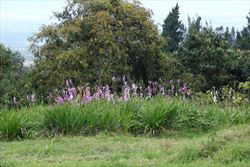
infestation (Photo: Forest and Kim Starr, USGS)
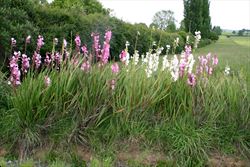
mixed infestation of the pink and white-flowered forms of rosy watsonia, Watsonia borbonica (Photo: Trevor James)
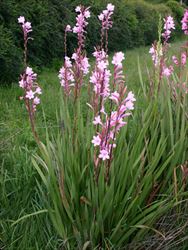
habit (Photo: Trevor James)

large strap-like leaves (Photo: Sheldon Navie)
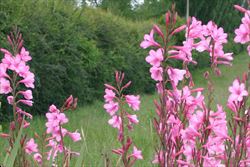
elongated flower clusters (Photo: Trevor James)

stalkless pink tubular flowers subtended by short reddish-tinged bracts (Photo: Sheldon Navie)
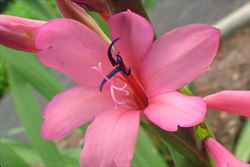
close-up of flower showing three-branched style, with each style branch having forked tips (Photo: Sheldon Navie)

close-up of stem and immature fruit (Photo: Sheldon Navie)
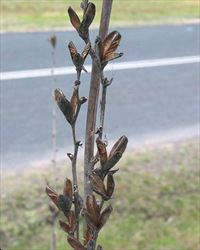
mature fruit (Photo: Jackie Miles and Max Campbell)
Scientific Name
Watsonia borbonica (Pourr.) Goldblatt
Synonyms
Gladiolus pyramidatus AndrewsLomenia borbonica Pourr.Watsonia ardernei SanderWatsonia borbonica (Pourr.) Goldblatt subsp. ardernei (Sander) GoldblattWatsonia borbonica (Pourr.) Goldblatt subsp. borbonicaWatsonia pyramidata (Andrews) KlattWatsonia wordsworthiana J.W. Mathews & L. Bolus
Family
Iridaceae
Common Names
bugle lily, buglelily, Cape bugle lily, Cape bugle-lily, pink watsonia, rosy watsonia, tall watsonia, watsonia, wild watsonia
Origin
Native to southern Africa (i.e. south-western Cape Province in South Africa).
Naturalised Distribution
Widely naturalised in southern Australia (i.e. in the coastal and sub-coastal districts of southern and central New South Wales, in southern Victoria, in south-eastern South Australia and in the coastal districts of south-western Western Australia).
Notes
Rosy watsonia (Watsonia borbonica) is regarded as an environmental weed in Western Australia, South Australia, Victoria and south-eastern New South Wales.

